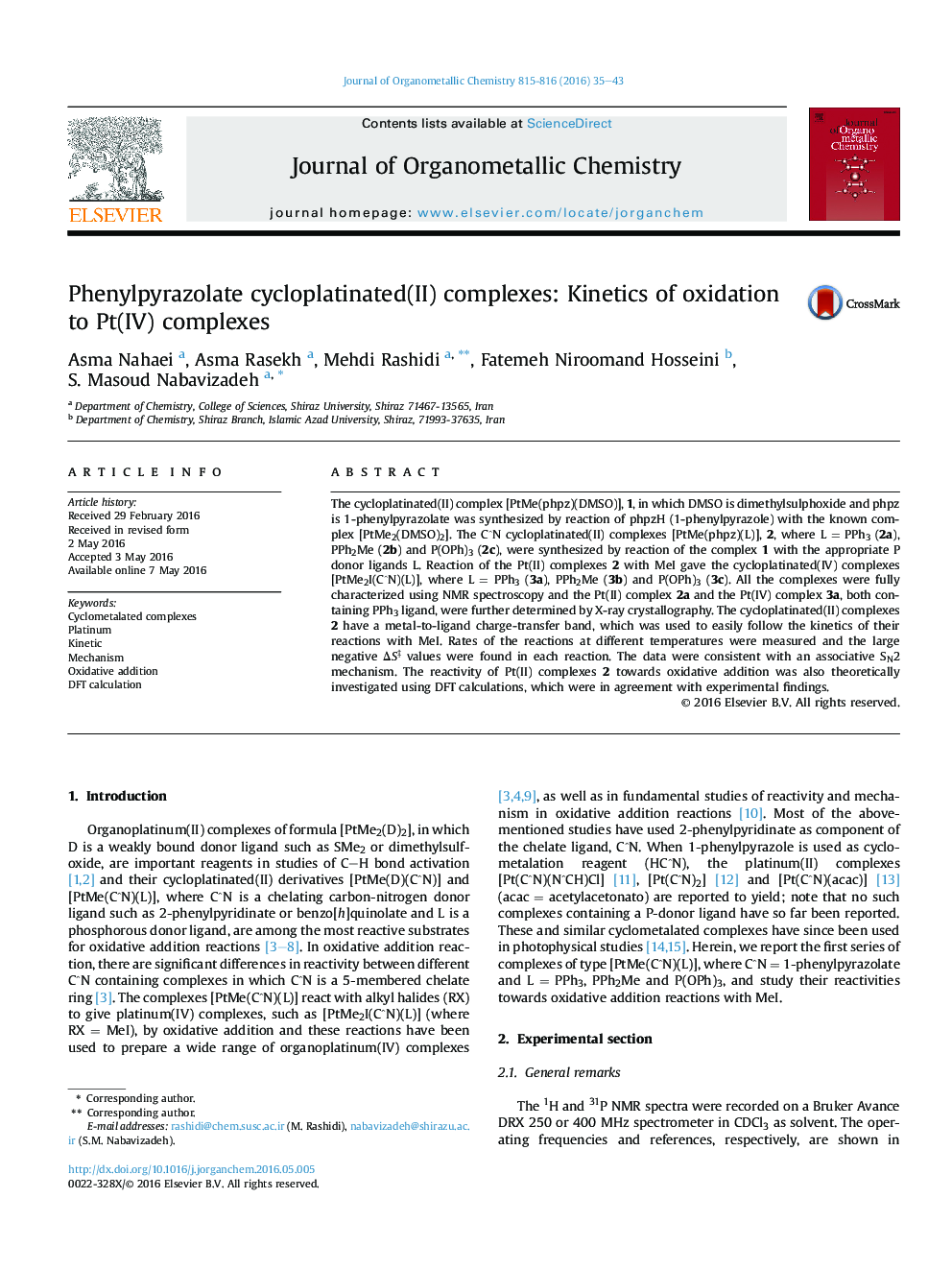| Article ID | Journal | Published Year | Pages | File Type |
|---|---|---|---|---|
| 1320497 | Journal of Organometallic Chemistry | 2016 | 9 Pages |
•New phenylpyrazolate cycloplatinated(II) complexes are prepared.•kinetics of oxidation of Pt(II) complexes to Pt(IV) complexes are studied.•The structures of cyclometalated platinum(II) and platinum(IV) complexes are determined.
The cycloplatinated(II) complex [PtMe(phpz)(DMSO)], 1, in which DMSO is dimethylsulphoxide and phpz is 1-phenylpyrazolate was synthesized by reaction of phpzH (1-phenylpyrazole) with the known complex [PtMe2(DMSO)2]. The CˆN cycloplatinated(II) complexes [PtMe(phpz)(L)], 2, where L = PPh3 (2a), PPh2Me (2b) and P(OPh)3 (2c), were synthesized by reaction of the complex 1 with the appropriate P donor ligands L. Reaction of the Pt(II) complexes 2 with MeI gave the cycloplatinated(IV) complexes [PtMe2I(CˆN)(L)], where L = PPh3 (3a), PPh2Me (3b) and P(OPh)3 (3c). All the complexes were fully characterized using NMR spectroscopy and the Pt(II) complex 2a and the Pt(IV) complex 3a, both containing PPh3 ligand, were further determined by X-ray crystallography. The cycloplatinated(II) complexes 2 have a metal-to-ligand charge-transfer band, which was used to easily follow the kinetics of their reactions with MeI. Rates of the reactions at different temperatures were measured and the large negative ΔS‡ values were found in each reaction. The data were consistent with an associative SN2 mechanism. The reactivity of Pt(II) complexes 2 towards oxidative addition was also theoretically investigated using DFT calculations, which were in agreement with experimental findings.
Graphical abstractThe new cycloplatinated(II) complexes [PtMe(phpz)(L)], in which phpz is 1-phenylpyrazolate and L = PPh3, PPh2Me or P(OPh3), were reacted with MeI to give the related cycloplatinated(IV) complexes [PtMe2I(CˆN)(L)].Figure optionsDownload full-size imageDownload as PowerPoint slide
